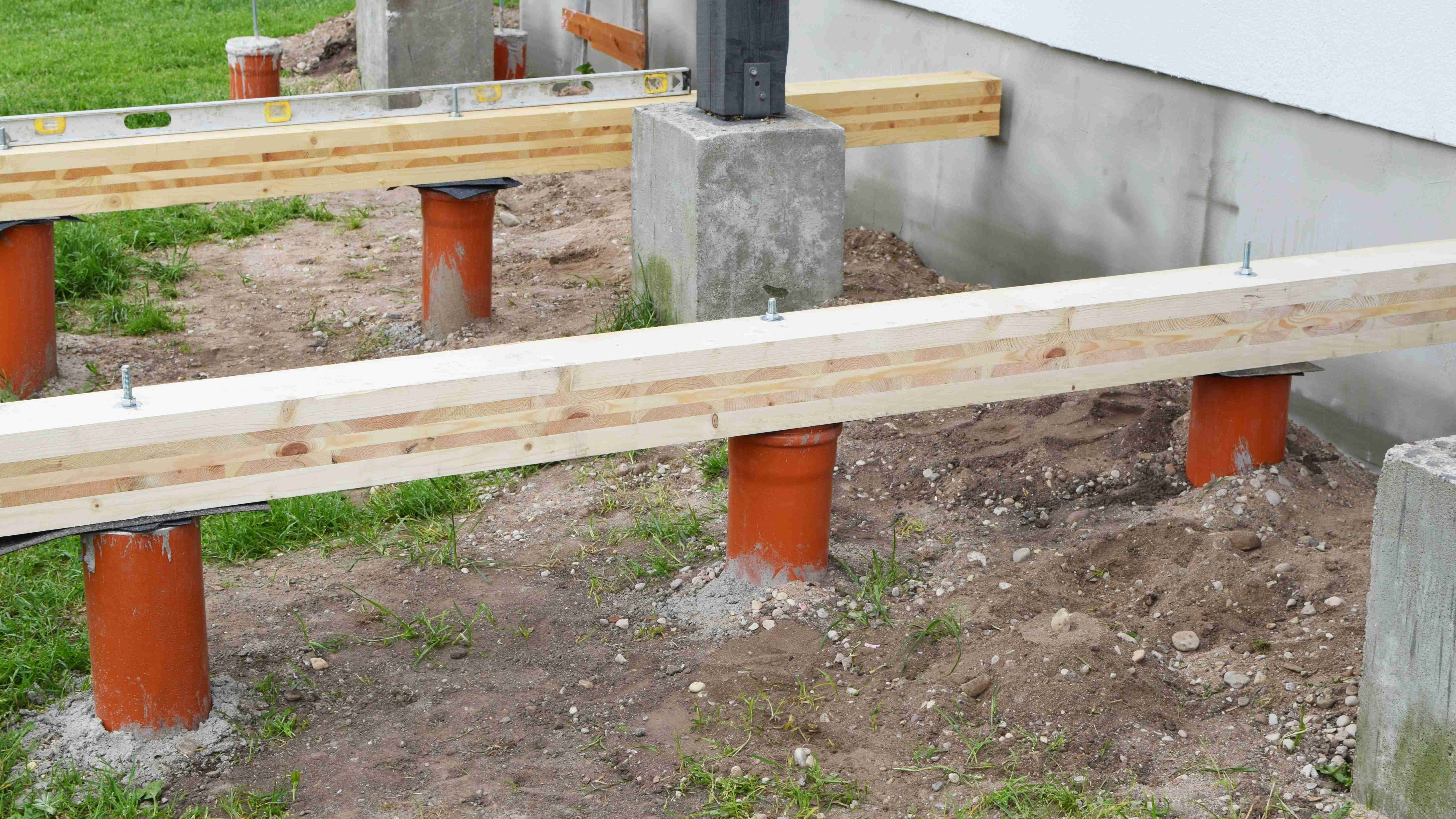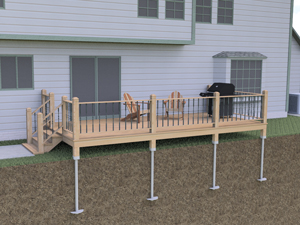Deck Footings Demystified: Your Blueprint for a Safe, Long-Lasting Outdoor Place
Wiki Article
Professional Tips for Installing Deck Footings to Assistance Your Outdoor Area
When it comes to developing a deck, one of the most essential aspects to think about is the installment of appropriate grounds. These footings are the foundation upon which your outdoor space will relax, giving security and assistance for years to come. What specifically does it take to mount deck grounds correctly?Relevance of Appropriate Deck Footings
Appropriate deck footings are crucial for making certain the stability and longevity of your outdoor room. Without strong and appropriately installed footings, your deck might become unstable, leading to safety dangers and pricey repairs.
In addition to stability, proper deck grounds additionally add to the durability of your outdoor space (Deck Footings). Grounds that are created and built to endure the elements and dirt problems in your area will help prevent the deck from changing or resolving over time. By guaranteeing the footings are properly sized and installed, you can reduce the danger of damage to the deck structure, extending its lifespan and decreasing the need for costly fixings or substitutes

Choosing the Right Sort Of Footings
When choosing the appropriate kind of grounds for your deck, it is very important to think about elements such as soil conditions, regional building ordinance, and the general style of your outside room. The kind of footing you pick will certainly play a crucial role in guaranteeing the stability and longevity of your deck.One common sort of ground is the concrete footing. Concrete footings are ideal for many dirt problems and offer superb support for decks. They are typically set up listed below the frost line to avoid shifting and clearing up due to cold and thawing cycles. One more choice is helical piers, which are excellent for areas with unstable dirt or high water tables. These piers are screwed into the ground and provide strong support for the deck.
In many cases, you may need to use specific grounds, such as stack footings or deep structures, if you are building a large or multi-level deck. These grounds are designed to distribute the weight of the deck over a larger location, making certain security and stopping working out or sinking.
Before picking a sort of footing, it is crucial to seek advice from neighborhood building regulations and laws to make sure conformity. Furthermore, consider the design and planned use your outdoor room. Variables such as the size, shape, and load-bearing needs of your deck will affect the kind of footing that is most suitable.
Preparing the Ground for Footing Installment
To appropriately prepare the ground for footing installation, it is very important to examine the soil problems and take required steps to make sure stability and resilience of the deck. The initial step is to dig deep into the location where the footings will certainly be installed. The deepness of the excavation will depend on the frost line in your area and the particular requirements of the deck layout. It is crucial to eliminate any type of vegetation, rocks, or particles from the excavation to guarantee a solid structure.Once the area has actually been dug deep into, the next action is to portable the soil. This can be done utilizing a plate compactor or by using a hand tamper. Compacting the dirt aids to eliminate any type of gaps or air pockets, which can result in clearing up and instability over time.
After compacting the dirt, it is very important to lay a layer of gravel or smashed rock at the end of the excavation. This will give drain and assistance to protect against water from pooling around the footings, which can result in disintegration and instability.
Step-by-Step Overview to Putting Up Deck Footings
After properly preparing the ground for footing setup, the next step is to start the procedure of installing deck footings. This step-by-step guide will certainly give you with a clear understanding of how to install deck footings for your outside area.Establish the location: Start by marking the settings of the deck grounds making use of risks and string. Ensure that the places straighten with the style and format of your deck.
Dig the openings: Make use of a blog post opening miner or an auger redirected here to dig the openings for the grounds. The deepness and size of the openings should be in accordance with regional structure codes and the certain requirements of your deck layout.
Degree the openings: Make use of a degree to guarantee that the holes are dug to the correct depth and are level with each other. (Deck Footings)
Include gravel: Area a layer of gravel at the bottom of each hole to improve water drainage and protect against the wood from deteriorating.
Place the grounds: Position the footings right into the holes, making sure they are degree and plumb. Make use of a degree and a gauging tape to guarantee accuracy.
Protect the grounds: Put concrete right into the holes around the grounds, filling them to the top. Utilize a message degree to ensure the grounds continue to be degree as the concrete collections.
Allow time for treating: Allow the concrete remedy according to the manufacturer's guidelines before continuing with the deck building and construction.
Common Errors to Avoid During Footing Installation
One crucial element to take into consideration visit site during the setup of deck grounds is staying clear of typical errors that can jeopardize the security and long life of your outdoor room. While deck grounds might appear like a basic and simple component of the building and construction procedure, overlooking specific elements can result in pricey repairs and potential safety and security hazards down the line.
Furthermore, neglecting to mount proper water drainage actions can cause water to accumulate around the grounds, resulting in rot, degeneration, and the ultimate weakening of the deck's structure. Additionally, using the incorrect kind of footing product or failing to adequately protect the grounds can endanger their structural integrity.
To avoid these errors, it is necessary to speak with an expert or adhere to market standards to make certain proper ground installation. By doing so, you can make certain the security and longevity of your outdoor space, giving a secure and delightful atmosphere for many years to come.
Conclusion
Finally, installing proper deck footings is crucial for the security and longevity of your exterior space. By picking the ideal kind of grounds and appropriately preparing the ground, you can guarantee a solid structure for your deck. Adhering to a step-by-step overview and staying clear of typical blunders throughout footing setup will even more enhance the durability and security of your deck.Appropriate deck grounds are essential for making sure the stability and durability of your outside space. The footings offer as a connection in between the ground and the deck, allowing the weight of the deck and its occupants to be spread evenly into the soil.One usual type of footing is the concrete ground. Place the footings: Place the grounds right into the holes, making certain they are level and plumb. Secure the view publisher site footings: Put concrete into the holes around the grounds, filling them to the top.
Report this wiki page